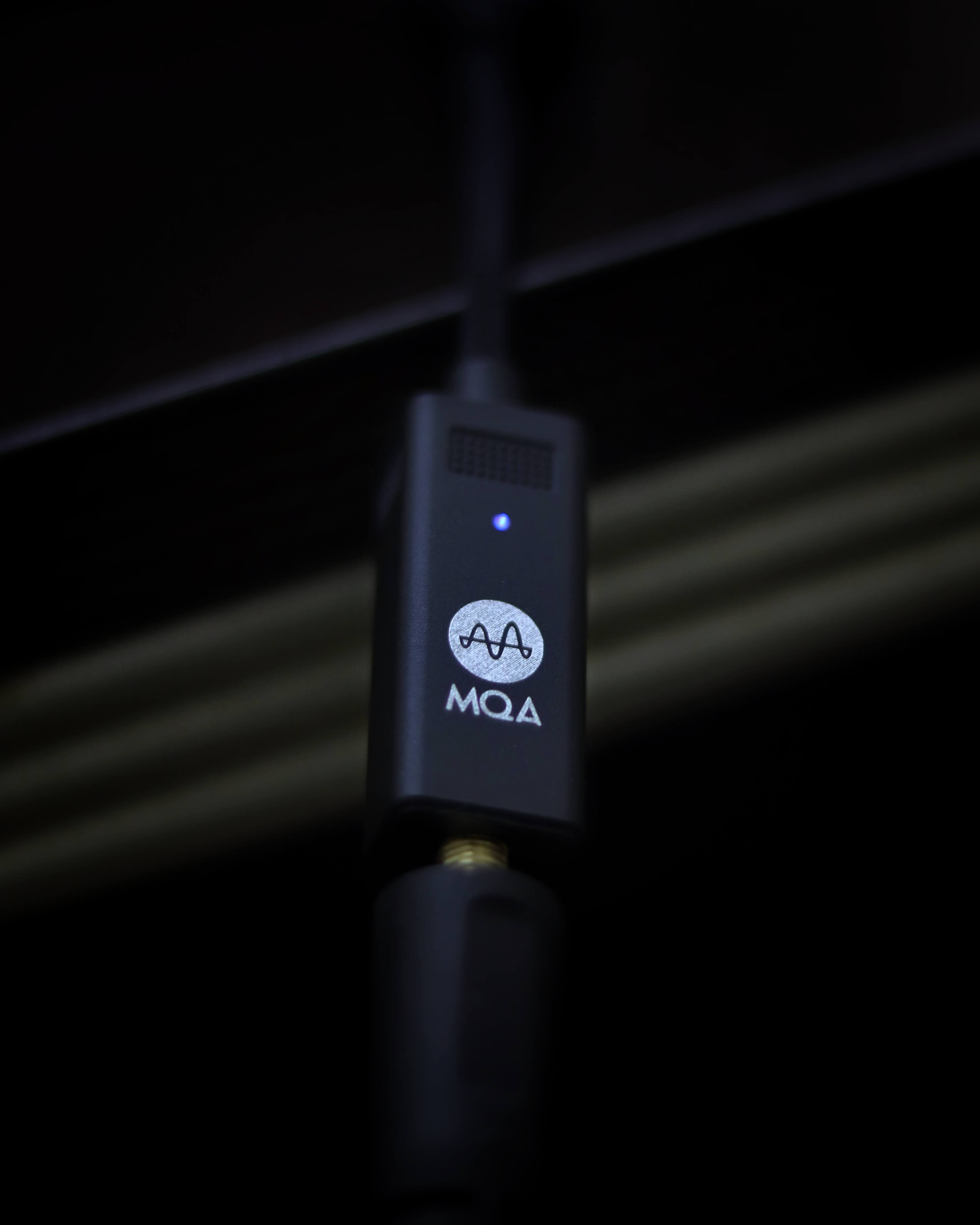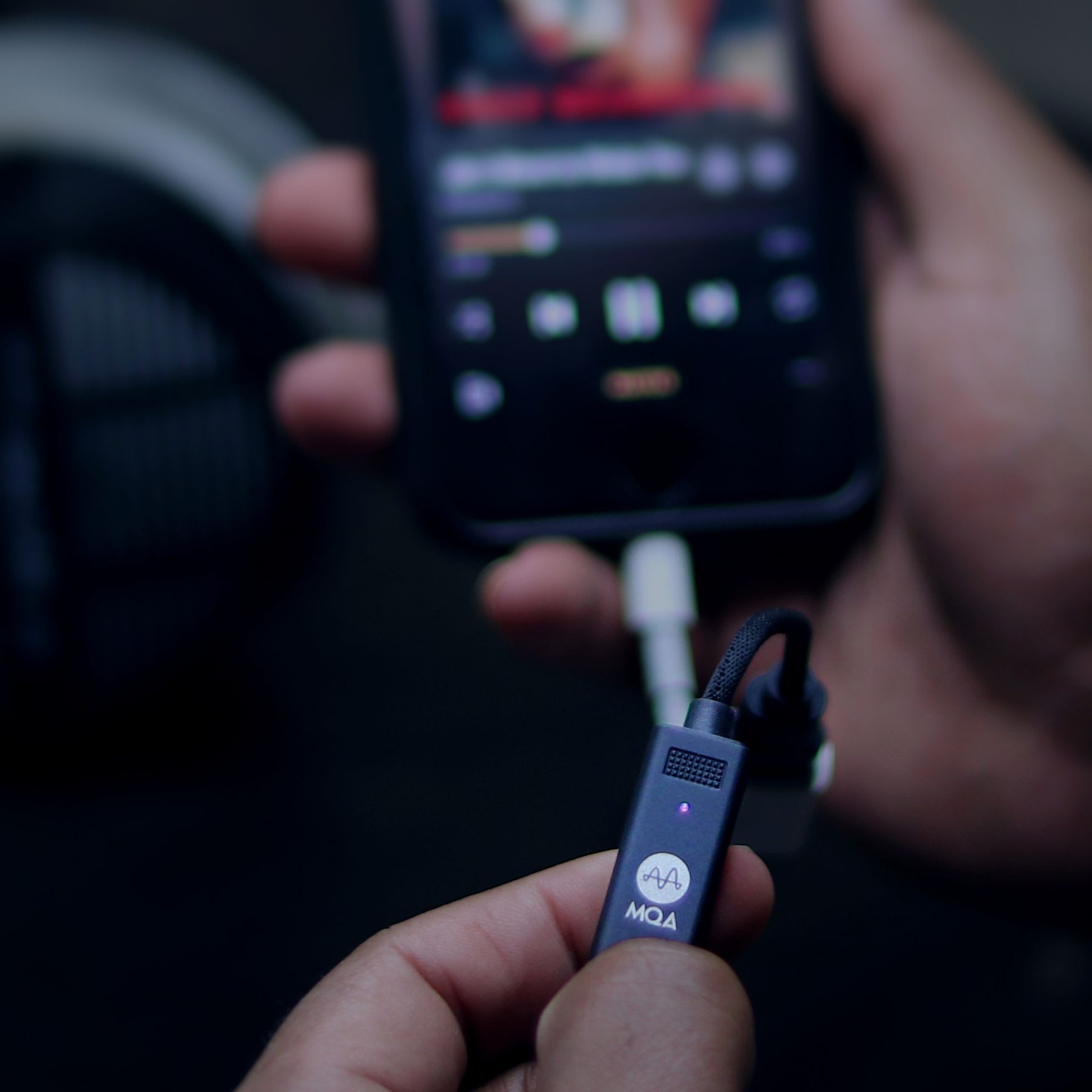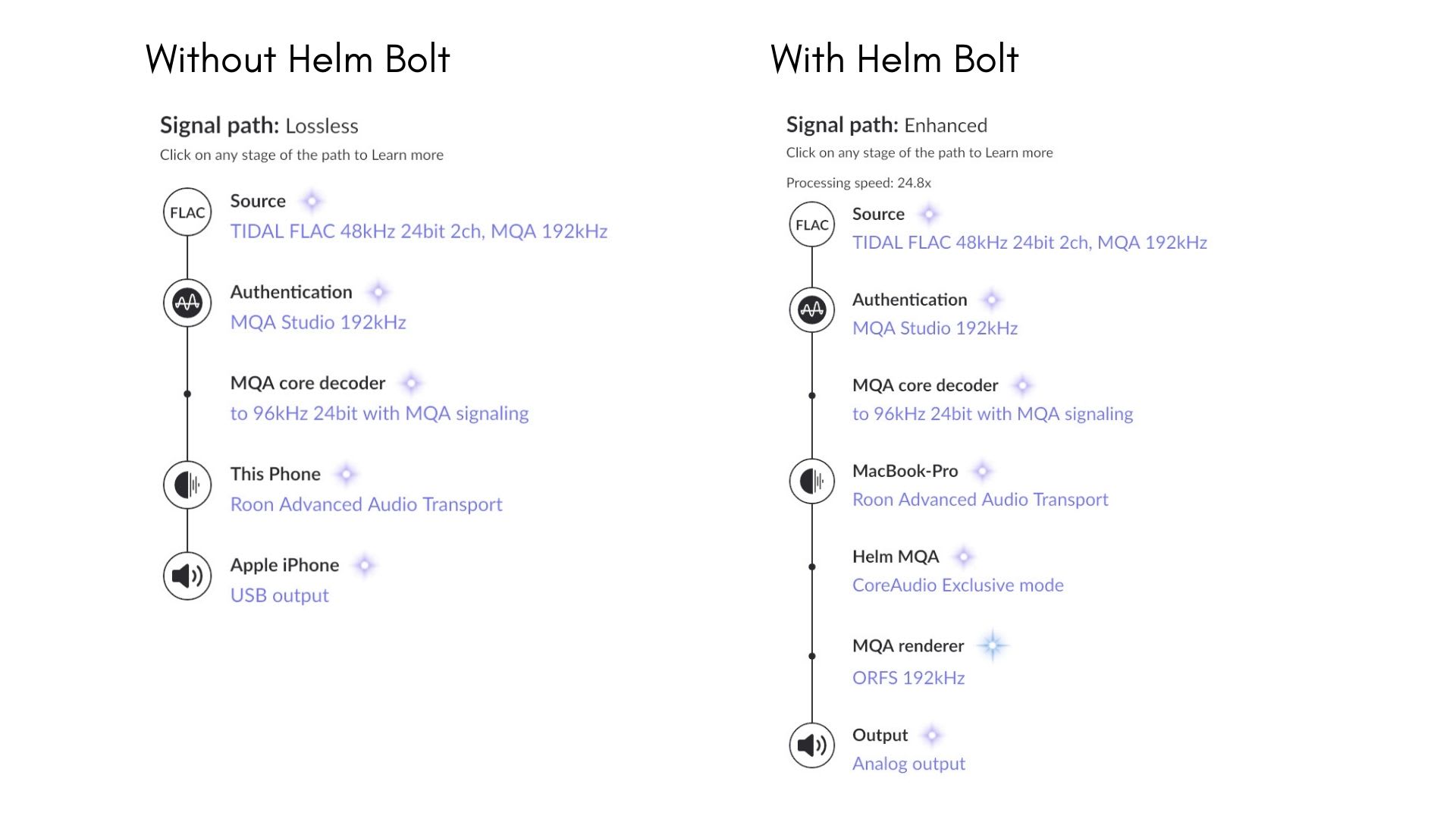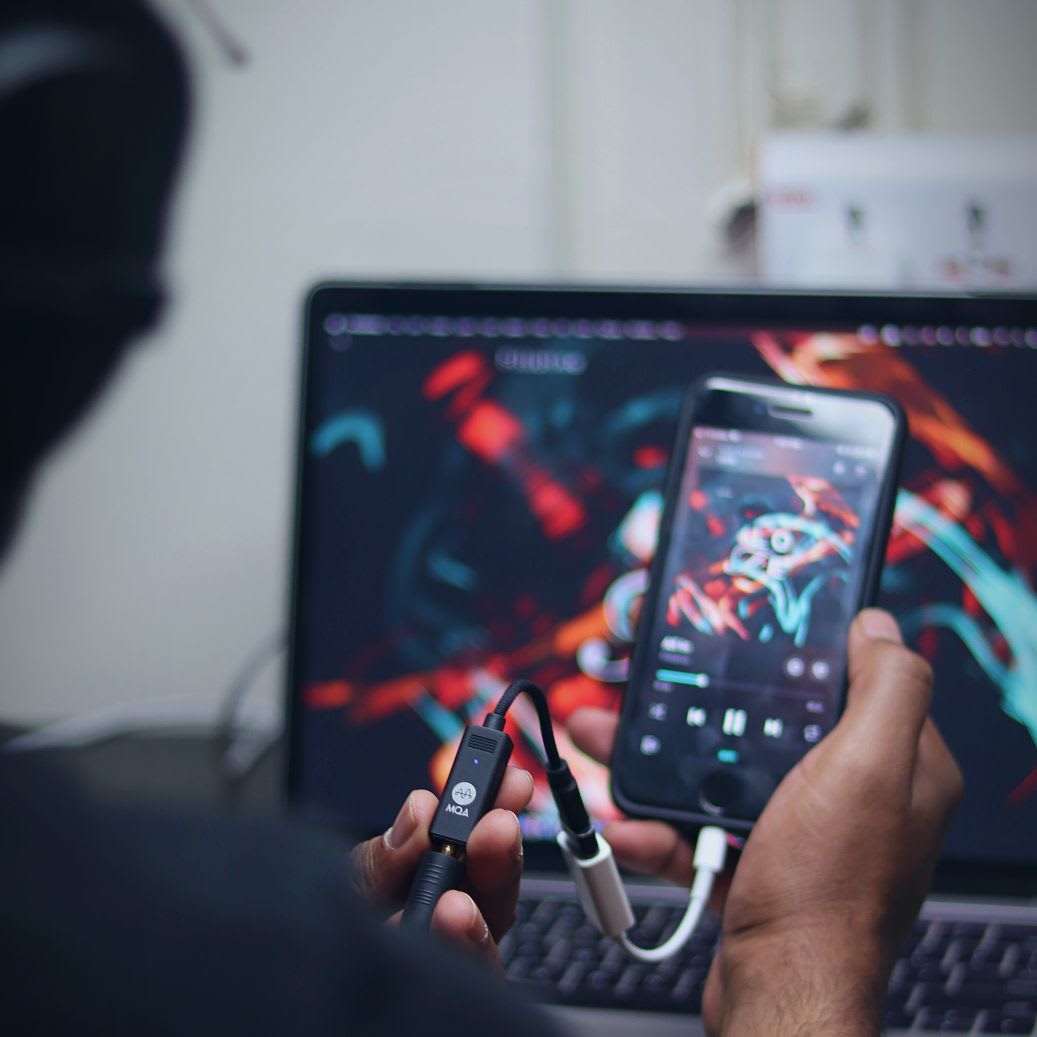In Review: Helm BOLT DAC, Portable with MQA support
Once you get the feel of what an external DAC/AMP can do to the sound of your HiFi system, it is hard to go back to listening to the output from the regular 3.5mm jack on your computer or phone. The care and the details that are put into the music by its creators can be justified while listening by externalising the DAC in most cases, provided the mastering is good.
An external DAC takes over the duties of converting the digital signal from streaming services, a CD or from a record player to an analogue signal that can then be fed into an amplifier or a speaker system. This dedicated circuitry within external DACs is in almost all cases better than the D/A converter circuit within your computer or phone, although there are exceptions like LG's V series phones that have exceptionally good DAC circuit within.
With growing interest in creating compact devices, budget cut in device real estate impacts the possibility of having high end dedicated circuits that can carry out D/A conversion effectively.
With the effects of last year wearing out in various parts of the world, people are becoming more mobile and as a result, so is their music listening habits. Listening to music in a coffee shop or during a general commute is becoming normal in at least some part of the world.
I use an external DAC with my desktop headphone setup and also with my main stereo listening system. The output from the USB port of a computer or streamer flows directly into these DACs. But for using my IEMs with my phone while moving around, I have been using Apple's proprietary lightning to 3.5 mm connector.
This connector is essentially a DAC, but it is not exceptionally good. But for about $10 it does a fairly good job.
To make better use of Hi-Res audio and Tidal's MQA files, I was on the lookout for a portable DAC that could serve HiFi on the go. As a result, over the past few days, I was able to test the Helm BOLT DAC/Amp from the British-American company Helm Audio.
It costs 9,990 INR ($99 in the US) portable DAC/Amp that supports MQA and is THX certified, sold in India through The Audio Store.
Note: This is not a sponsored post by Helm or The Audio Store and I am not influenced in any way to review this unit.
All the details are as per thorough use and review of the product over several days. THX certification is a feather in Helm's hat. Described in Helm Bolt listing as follows on THX's website:
THX Certification is the gold standard when it comes to assuring listeners that they receive uncompromising quality, consistency, and performance every time they use the HELM BOLT DAC/AMP. When it comes to quality audio, THX Certification provides audiophiles with an unbeatable high fidelity entertainment experience unlike any other.
Let's talk about MQA. What is MQA? Is it a lossless encoding? Is it the best quality audio?
MQA stands for Master Quality Authenticated. It was launched in 2014 by Meridian Audio as an audio codec that enabled the streaming of high-res audio files. It implemented a form of file fingerprinting for streaming and downloading music files on the internet.
More about the compression technique from MQA's official website:
Using a unique ‘origami’ folding technique, the information is packaged efficiently to retain all the detail from the studio recording. While MQA retains 100% of the original recording, an MP3 file keeps just 10% of the data. Digital Trends has named MQA’s hi-res audio format a “game-changer”.
Internet is divided on whether MQA is lossy or lossless, but we won't get into that. Instead, think of MQA more as a way of being able to stream studio quality files from the internet by packaging them into streamable packages and then using a device that is capable of MQA decoding to unpack the data and decode the original data from the package.
On the MQA decoding capability on devices and apps, the website continues:
Devices or apps with MQA decoding capability can fully ‘unfold’ the MQA file and reveal the original master resolution. They will also authenticate the file to guarantee that it is the definitive master recording from the studio. According to What Hi-Fi?: “Wherever there is sound, MQA delivers the best version of it.”
In my experience with MQA from Tidal, it does sound better and if you want to dig deeper into whether MQA is lossless or not, this video by Hans Beekhuyzen is a great place to start.
The Helm Bolt DAC itself is well built and has a hard plastic body with a flexible and fibre-covered cable connecting the USB C adaptor and the DAC housing. The cable feels sturdy and is way better than Apple's cable. The output is a standard 3.5mm jack.
Helm Bolt works across devices, from headphones to IEMs because the device detects the impedance of the headphone and sets the output level accordingly. For anything less than 150 ohms, it sets output level of 1V and for anything over 150 ohms, it sets output of 2v. This ensures that those harder to drive headphones get a little more juice to enable playing through them at respectable audio levels. Also, Bolt is not a power hogger, it was just additional 1-2% drop in battery on my iPhone (iPhone SE 2) every 20 mins or so.
Bolt also has an LED which indicates the sample rate of the music that is being played back and also if MQA is being rendered. Blue light for idle or audio below 48kHz, red for anything more than 48kHz and magenta for MQA.
The way the DAC chip is isolated from the USB C connector is by housing the entire DAC chip into another section separated by the connecting chord. Here is what Helm Audio has to say about how they avoid distortion:
The HELM BOLT is THX Certified for ultra-low harmonic, crosstalk, and crossover distortion. Unlike other mobile MQA-DAC designs, the HELM BOLT physically isolates the DAC from the USB connector for improved performance, and uses a three oscillator design for superior frequency lock with dramatic improvements over single oscillator DACs.
As stated earlier, the DAC within phones isn't generally that great. My iPhone is no exception. This is why audio coming out of a traditional audio jack doesn't sound that great, even while using a good pair of headphones. The same goes for my Macbook.

These are all the technical aspects, but what I was interested in was to know if it is worth investing in this device especially since this comes with a "portable" tag, more than anything, I wish to evaluate how portable it is. Because there are devices like Chord Hugo, FiiO DACs which are clamped to the phone with a set of bands that cover up a portion of the screen. Not ideal.
I listen to music on a variety of devices, on bookshelf speakers, headphones and in-ear monitors. I don't have a special affinity to any of these but I use whichever is appropriate or available at the moment. When I travel short distances or go for a morning walk or coffee shop, I tend to take my IEMs with me purely for convenience.
IEMs are easy to carry and manage while being on the move. For Helm Bolt being a portable DAC, let's talk about the sound first and then tackle portability, which is a tricky subject for this device in particular for a certain set of users.
Sound
If something doesn't sound great, you might do better just using the built-in headphone jack. The moment I played the first song on Helm BOLT, I knew that this was different and better. It was better than the headphone jack and better than Apple's lightning to 3.5 mm converter. The difference wasn't night and day, but it was there. But I was surprised when I tried it on my Macbook. The difference there was night and day or at least twilight and day!
Does it power high impedance headphones you ask? No problem at all. I own a pair of Beyerdynamic DT 990 Pro 250 ohm headphones and Bolt has no issues powering them. I am not someone who listens to music loudly, keeping it pretty much in the 55-65 dB range and Bolt provides enough power to the DT 990 for that volume level.
It definitely cannot match the power of a desktop DAC/Amp combo, like my iFi Zen DAC or even something like an Audioquest Dragonfly Red. But it does a pretty decent job.
Another thing about DT990 specifically is that for some, it is a little bit too harsh around the 6K kHz mark resulting in some of the highs being sharp and piercing. But with Bolt, I felt that the highs were more rounded resulting in more pleasant sound. This is specially evident in the track The Vowels, Pt 2 from the album Alopecia by the band Why?. The chain drop kind of sound that is present throughout the song, can sometimes be too sharp, but I felt that Bolt managed it well and shaped it into a more pleasant listening experience.

That is about the power of this little pocket rocket. What about the sound? What does it do to your music? To find out, I used it extensively for a few days listening to all kinds of music that I love. Here is the thing, to decide whether you like a device or not, use it to listen to the music you love and not certain "audiophile favourite" track because they generally sound great anywhere you play them.
Over the past couple of months, I have been listening to the band Filistine a lot. They are a fun band from Germany and I love their album - LoFe. I love the album so much that I paid for the album and brought it off their Bandcamp page although it is available on Spotify and Tidal.
One of the reasons I decided to choose LoFe as one of the albums for my listening test is because the album is a mix of songs that vary in style, tempo, acoustic layering and instrumental-vocal balance. This gave a wide area to cover and also to evaluate the versatility of the DAC. I did listen to other music as well, which we shall come to, shortly.
LoFe is a fun album and Bolt elevates that fun. Acoustic guitar sounds richer, vocals are more centred and the fine textures are revealed in great detail. Also for those who love the bass, it is beautifully enriched. The soundstage also gets a bit of expansion and the higher end frequencies are much more refined. Distortion in the guitars does not sound muddy even if you are someone who loves to listen at higher volumes.
One of my favourite track from the album is Moonlight. The vocals form a perfect blend with the spacious and deep bass. The guitar and the drums, specifically the high hat and cymbals, dance around the back of your head immersing you deeper into the music
Play opens up with a neat distorted bass track with a thumping bass drum giving it a nice low end to rest on. Guitar joins in with the vocals and it is a fast and punchy ride from there. But even at the peak pace of the song when all the instruments are harmoniously carrying the song around, you can hear the distinct separation of instruments and you'd find your hands tapping or your feet swaying and your head bobbing to the tune.
Overall, the DAC adds what is needed to the track. It makes it, yes you guessed it - more fun!
The same was true for many other albums I listened to - Ugly Beautiful by Babybird, Grow by Chon, Rumours by Fleetwood Mac, Dil Se by A.R Rahman. Bolt made listening to all these albums real great fun. The sound was heftier and richer. Like a Rolling Stone by Bob Dylan was a beautiful experience with fuller guitars, excellent separation and space.
In addition to all the above mentioned tracks on Tidal, I also listened to National Award winning sound engineer Sreejesh Nair's YouTube channel - The Mastering Project a lot. Yes you heard it right, on YouTube. He remasters some of the Indian movie soundtracks and some western songs as a hobby on his YouTube channel and everything just sounds a million times better. YouTube compression isn't great compared to all these high res streaming services.
But he still manages to make the songs sound much better than any other mix you might have seen anywhere. Which is a testament to the fact that mastering matters above all.
I can go on giving examples, but here is the point - no matter what type of music you are into, Bolt will make it sound better.
Coming to the MQA part of Helm, I used Roon to test the ability of the DAC to render MQA. Roon has a built-in rendering of the signal path which indicates whether the signal is processed through a lossy, lossless or enhanced path.

In the screenshot above, the first section shows the signal path with output directly from the 3.5mm lightning converter of an iPhone which isn't MQA enabled hardware and the second section shows the signal path through Helm Bolt attached to a Macbook. Both playing the same MQA encoded master file from Tidal through Roon.
The signal path is lossless in the first case because Tidal does the first decoding of the MQA file that is being streamed from its source. This results in a 96kHz file which is then played through the iPhone and the signal path is described as being lossless. In the second case, after the first decoding by the Tidal app, the signal passes on to the Helm Bolt which then further unfolds and renders the file in 192kHz, practically enhancing the signal, which is represented by the bright blue star symbol right next to the MQA renderer of Helm Bolt.
Also, the signal path is described as being enhanced. Hence making full use of MQA and unfolding it to the original form which in this case is 192kHz. So, Bolt does deliver what it claims when it comes to MQA capability.
Bolt also works well connected to the USB out of my Raspberry Pi streamer. It sounds slightly better than my Boss DAC connected to the RPi and way better than the 3.5mm out. Boss DAC itself is an excellent DAC, so the difference while using Bolt, at least to my ears were just little over subtle. But if you have a Pi streamer, connecting a Bolt would transform it instantly to a HiFi streamer that you'd be proud of, given the price.
Portability
Evaluating Helm Bolt as a DAC has been a rewarding experience, especially with my IEMs. IEMs align a bit more towards the use case for something like Bolt because if you are like me, you'd prefer your IEMs while being outdoors. The portability part of this may differ a bit for iPhone and Android users and that could be a bit of an Achilles heel for iPhone users.
As we all know, Apple haven't yet given up on their lightning connectors on the iPhone and there are very few, if any, DACs that come with native lightning connectors. This results in a long train of connectors or dongles coming out of the iPhone connecting to IEM or headphone, which could be a hassle. But is much less of a hassle than most of the portable DACs in the market.
For android users, the limitations of the OS results in the output being restricted to 48kHz. To get around this, android users have to invest a few dollars to buy an app called USB Audio Player PRO which takes control of the USB drive and enables the signal to be decoded beyond 48kHz.
Verdict
While people listen and enjoy their music differently, based on my time and experience with Helm Bolt, as a DAC it is fantastic. It will very much improve the sound of your device, be it a phone or a laptop. You'd be delighted provided you keep a few things in mind before you make your purchase.

If portability with a phone is your primary use case, then you fall into either of the two categories - one who has to shell out extra money for an app like USB Audio Pro for Android or one who carries around a long train of dongles due to Apple's decision to keep the lightning ports on its devices.
But on the other hand, if you just want to connect it to your laptop while working out of a coffee shop, Helm Bolt is perfect. But either way, being an audiophile means that you wouldn't mind a bit of extra effort which gives you a better sound.
If you can look beyond the minor inconveniences due to hardware and software limitations which are beyond the control of Helm, Helm Bolt is an amazing gear to have in your audiophile arsenal. I had a blast with it and without hesitation would pick it up for my next "coffee shop" time or a commute. Thanks to The Audio Store for their support throughout the review process.
Helm Bolt delivers what it claims and guaranteed that you will enjoy rediscovering your music!
If you like what I write, subscribe to my blog via email or RSS feed.